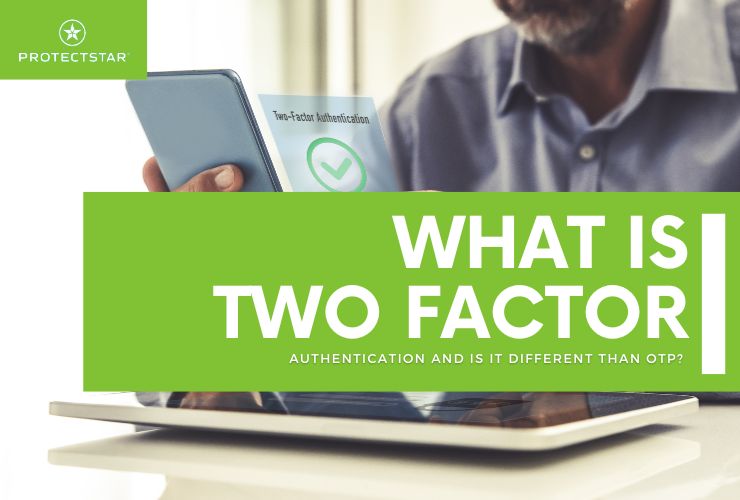Two-Factor Authentication: What is it, how does it work and more

Imagine your front door has two locks. One is your key (your password), the other a constantly changing code delivered to your phone (your second factor). That's the essence of Two-Factor Authentication (2FA), a security system adding an extra layer of defense against unauthorized access to your online accounts.
OTP and 2FA: Are They The Same?
While often used interchangeably, there's a subtle difference between OTP (One-Time Password) and 2FA:
- OTP: An OTP is a single, unique code used for one login attempt. It can be delivered via SMS, email, or generated by an app. Think of it as the disposable code on your credit card chip.
- 2FA: 2FA is a broader system that relies on two factors for authentication: something you know (password) and something you have (phone, security key) or something you are (fingerprint, facial recognition). OTP is one method used to achieve 2FA, but not the only one.
So, Google Authenticator is not better than 2FA itself. Google Authenticator is an app that uses the TOTP (Time-based One-Time Password) method to generate OTP codes for 2FA. TOTP codes are considered more secure than traditional SMS-delivered OTPs because they change at regular intervals (usually every 30 seconds) and don't rely on cellular networks.
The Strongest Contender in the 2FA Ring
When it comes to the "strongest" 2FA method, it depends on the situation. Here's what we know::
Authenticator Apps:
- TOTP (Time-based One-Time Password): This is the engine powering most authenticator apps like Google Authenticator or Microsoft Authenticator. It uses a combination of:
- Secret Key: A unique, shared secret key between the app and the online service you're logging in to. This key is typically generated during the initial setup.
- Time Synchronization: Both the app and the server rely on the same time reference (usually based on UTC - Coordinated Universal Time).
- The Code Conjuring: The app uses a specific algorithm (like HMAC-SHA1) to combine the secret key with the current time, generating a unique code that changes every 30 seconds or so. This ensures even if someone intercepts a code, it will be useless within a short window.
- Verification Dance: When you enter the generated code during login, the server performs the same calculation using the same secret key and current time. If the codes match, access is granted.
Security Keys:
- Public Key Cryptography: Security keys like YubiKeys rely on public key cryptography. This system involves two mathematically linked keys: a public key and a private key.
- Public Key (on the Server): This key is publicly available and used by the server to encrypt challenges.
- Private Key (in the Key): This key is securely stored within the security key itself and never leaves the device. It's used to decrypt the challenge and generate a digital signature.
- Challenge-Response: During login, the server sends a challenge to the security key. The key uses its private key to decrypt the challenge and create a digital signature.
- Verification: The signed response is sent back to the server. The server uses the public key (the counterpart to the private key in the security key) to verify the signature, ensuring the legitimacy of the login attempt.
Biometrics:
- Reading Your Body's Blueprint: Fingerprint scanners and facial recognition systems rely on sophisticated sensors to capture unique physical characteristics.
- Template Creation: This captured data is then converted into a mathematical representation called a template, which is stored securely on your device.
- Matching the Masterpiece: During login, the sensor captures a new image of your fingerprint or face. This new data is converted into a template and compared to the stored template.
- Access Granted (or Denied): If the templates match within a certain threshold, access is granted. A significant mismatch triggers a denial.
The ideal approach is a layered one. Consider using a combination of methods based on the sensitivity of the account. For instance, a high-security financial account might benefit from both a TOTP app and a security key, while a social media account might be secure with just a TOTP app.
What to Do if Breached
If you suspect a breach, take immediate action:
- Change your passwords: On all affected accounts, create strong, unique passwords and enable 2FA (if not already active).
- Secure your phone: Run a scan with a reputable Antivirus AI software like Protectstar to detect and remove any malware that might be lurking. Protectstar's advanced AI can identify even never-seen-before threats, offering an extra layer of defense.
- Report the breach: Inform the relevant platforms and consider filing a police report if necessary.
By being proactive and using robust security solutions like 2FA, multi-layered authentication methods, and advanced antivirus software, you can significantly reduce the risk of falling victim to cyberattacks. Remember, security is an ongoing process, so stay vigilant and keep your defenses up-to-date.